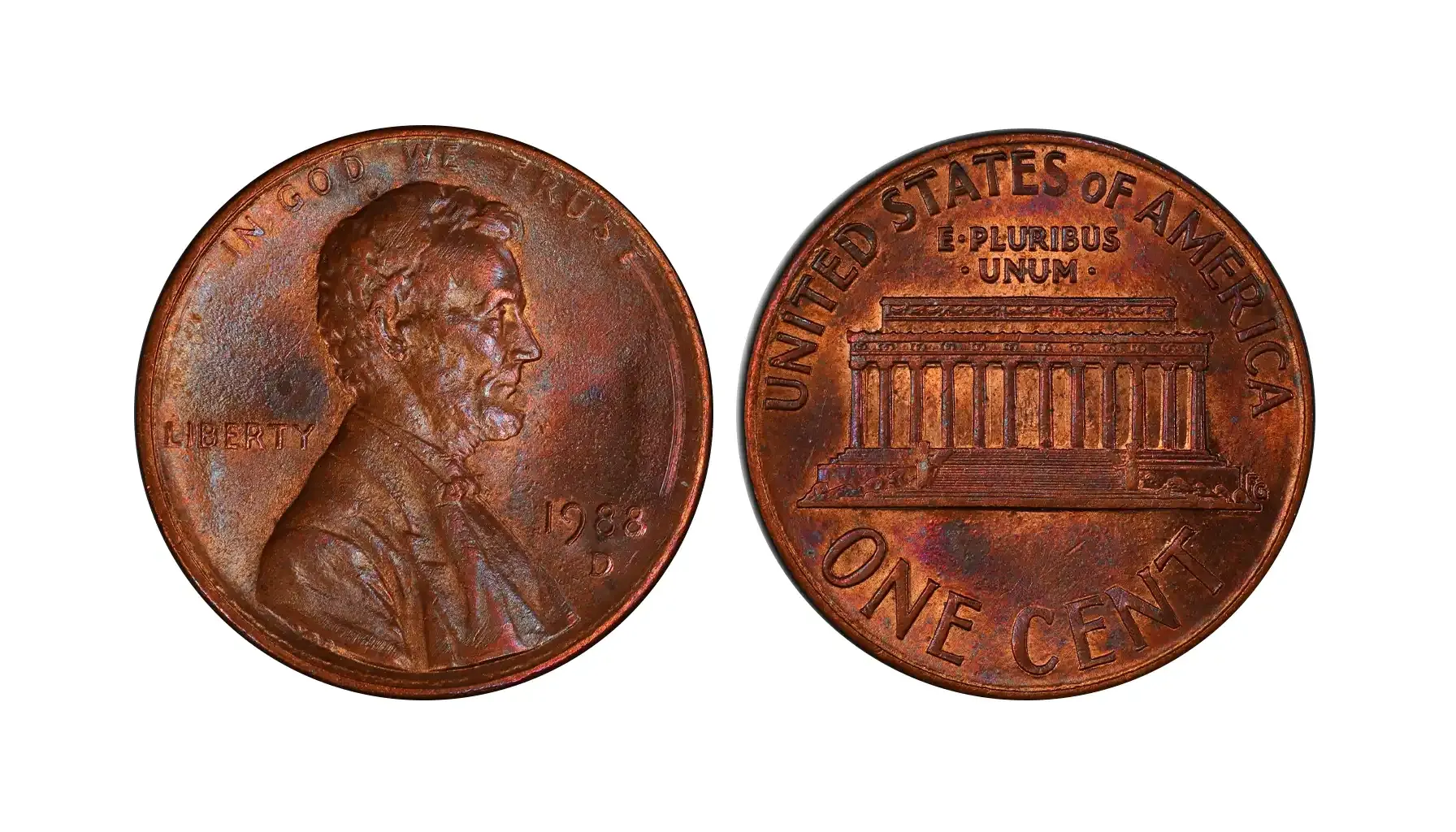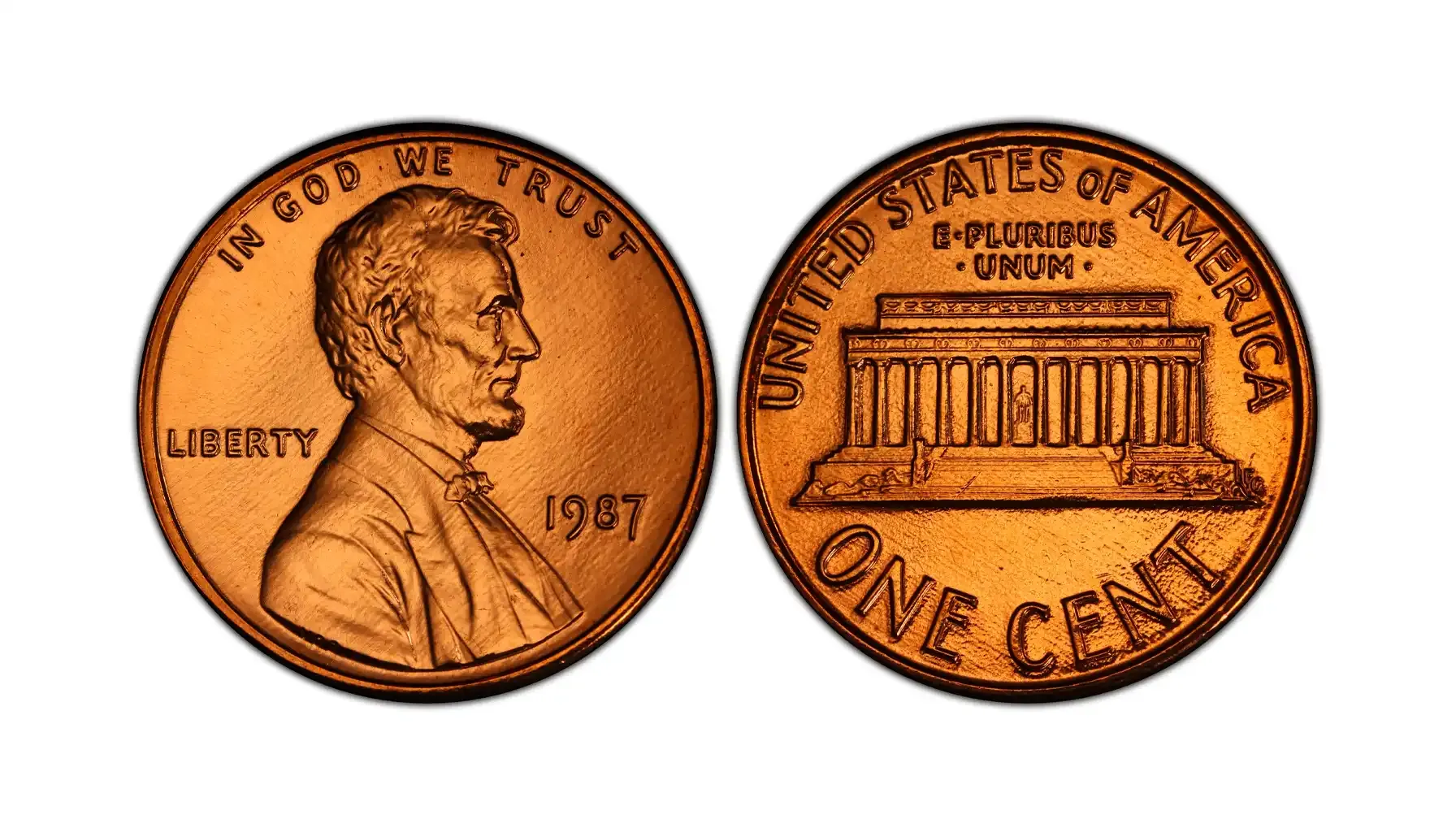Contents:
The coin in your collection is relatively new, but it can be precious. The Roosevelt Dime series had a gigantic mintage, more than a billion. Surely, a few coins there are valuable.
How much is a 1988 Dime worth? We’ll tell you. As well as what errors these coins may have. 1988 Dime error list with pictures included.
On that note, see the best way to check collector coins for value.
1988 Roosevelt Dime Design
This 1988 copper dime is named after the US president, Franklin D. Roosevelt, who appears as the portrait. The engraver, John R. Sinnock, made the design you’re seeing now.
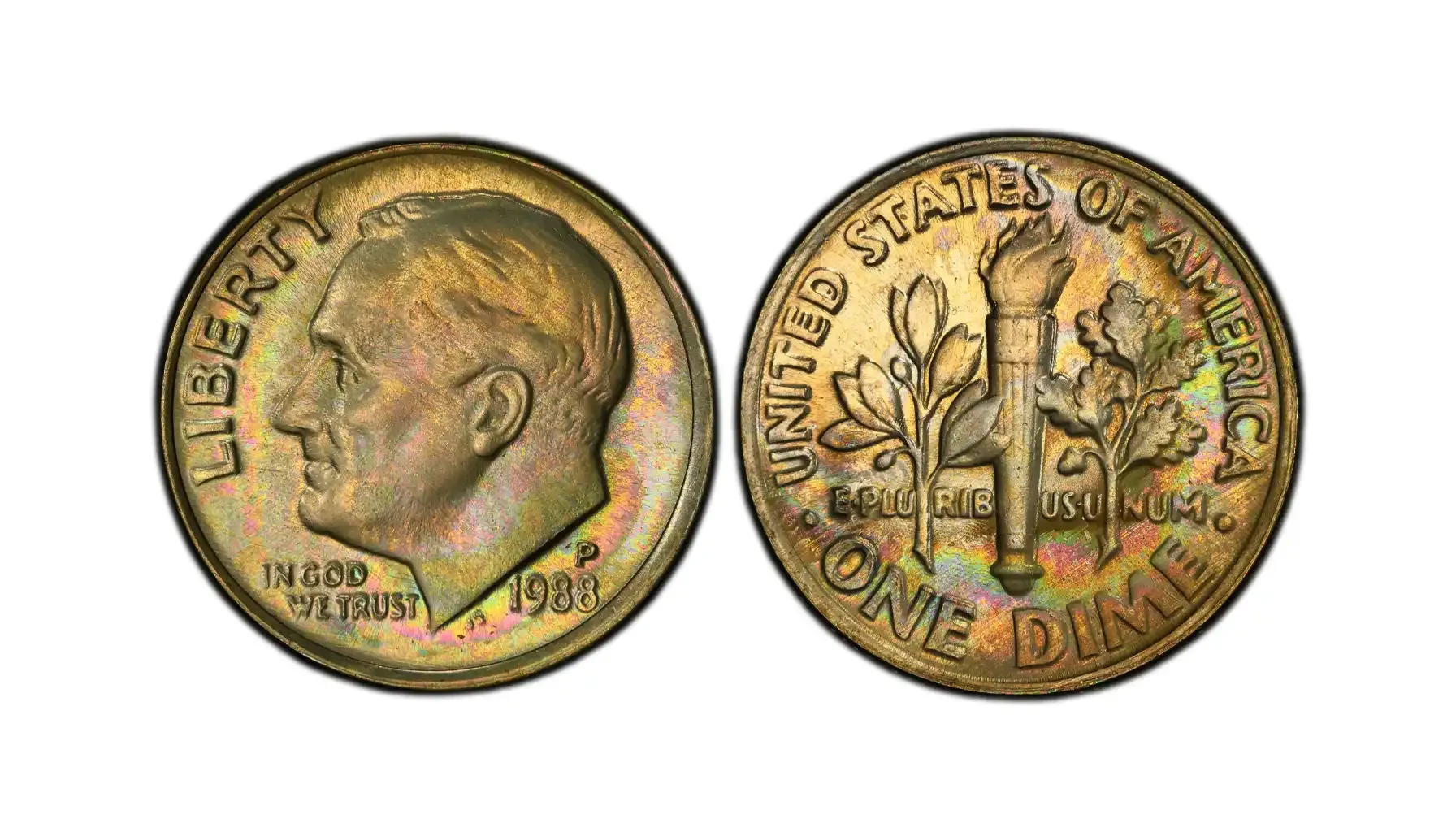
Observe: Left-facing bust of Franklin D. Roosevelt. The "LIBERTY" inscription lies to his left. The words "IN GOD WE TRUST" are below Roosevelt’s chin. The date (1988) takes the lower right of the bust, and just above it is the mint mark.
Reverse: The centerpiece shows a torch (symbolizing liberty). On both sides of the torch, there are branches. An olive branch (symbolizing peace) on the left. An oak branch (symbolizing strength and independence) is on the right. Behind the torch is an inscription, "E PLURIBUS UNUM". Inscriptions "UNITED STATES OF AMERICA" arch top edge. "ONE DIME" arch at the bottom.
The main characteristics of the 1988 Roosevelt dime | |
Country | United States |
Years of Minting | 1965-2024 |
Type: | Standard circulation |
Shape: | Round |
Composition and metal content | 91.67% Copper, 8.33% Nickel |
Diameter | 17.91 mm |
Weight | 2.268 grams |
The Mints | The Philadelphia Mint, The Denver Mint, The San Francisco Mint |
Fun fact: Roosevelt dime was one of the first coins to reach a billion mintage mark. All because of the technological progress happening during that era. The Mint facilities five computer LAN networks and an upgraded customer database. The result was a ten times increase in processing speed.
A Brief History Of The Roosevelt Dime
Firstly issued to honor President Franklin D. Roosevelt, who died in 1945. His image replaced the Winged Liberty Head design.
In 1955 San Francisco ceased the minting of coins.
New modifications came during 1968 and 1981. New hubs have been introduced frequently.
The piece hit its 50th anniversary and soon the mintage stopped.
1988 Roosevelt Dime Varieties
Commonly, you’ll see three main Dime types, depending on the mint mark.
P-dimes. Struck at the Philadelphia Mint.
D-dimes. Struck at the Denver Mint.
S-dimes. Struck at the San Francisco Mint.
Also, be careful. Some people say there’s an 1988 Gold Dime. Unfortunately, they are all copper. Material that is not valuable.
So look for the mark foremost.
1988 P Dime Value
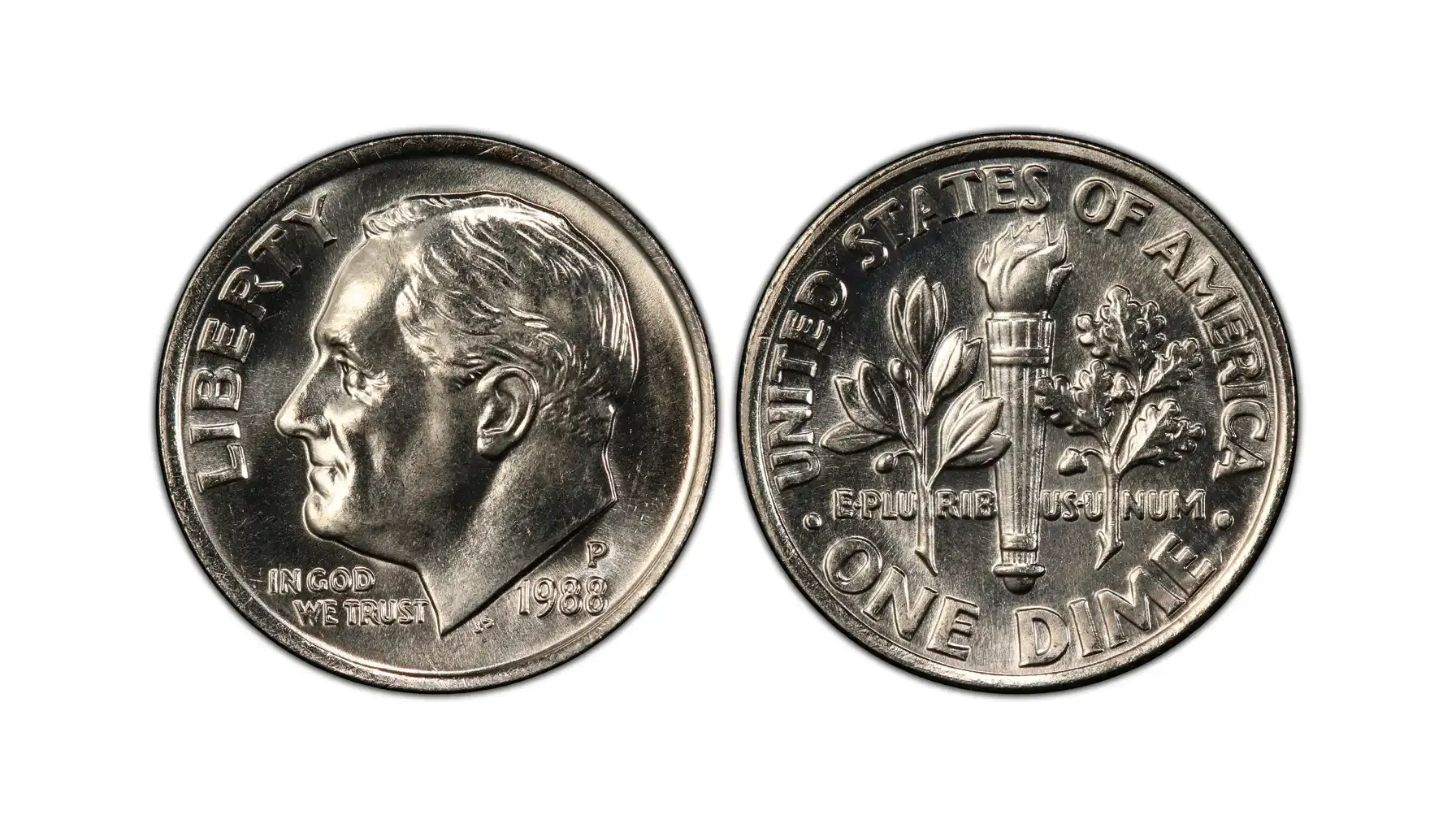
1988 Dime P had an extraordinarily big mintage of 1,030,550,000 pieces.
The 1988 P Dime worth is influenced by mintage numbers. Of course, it means that the average price is lower.
One Dime 1988 P value is less than a dollar. About 10¢.
1988 D Dime Value
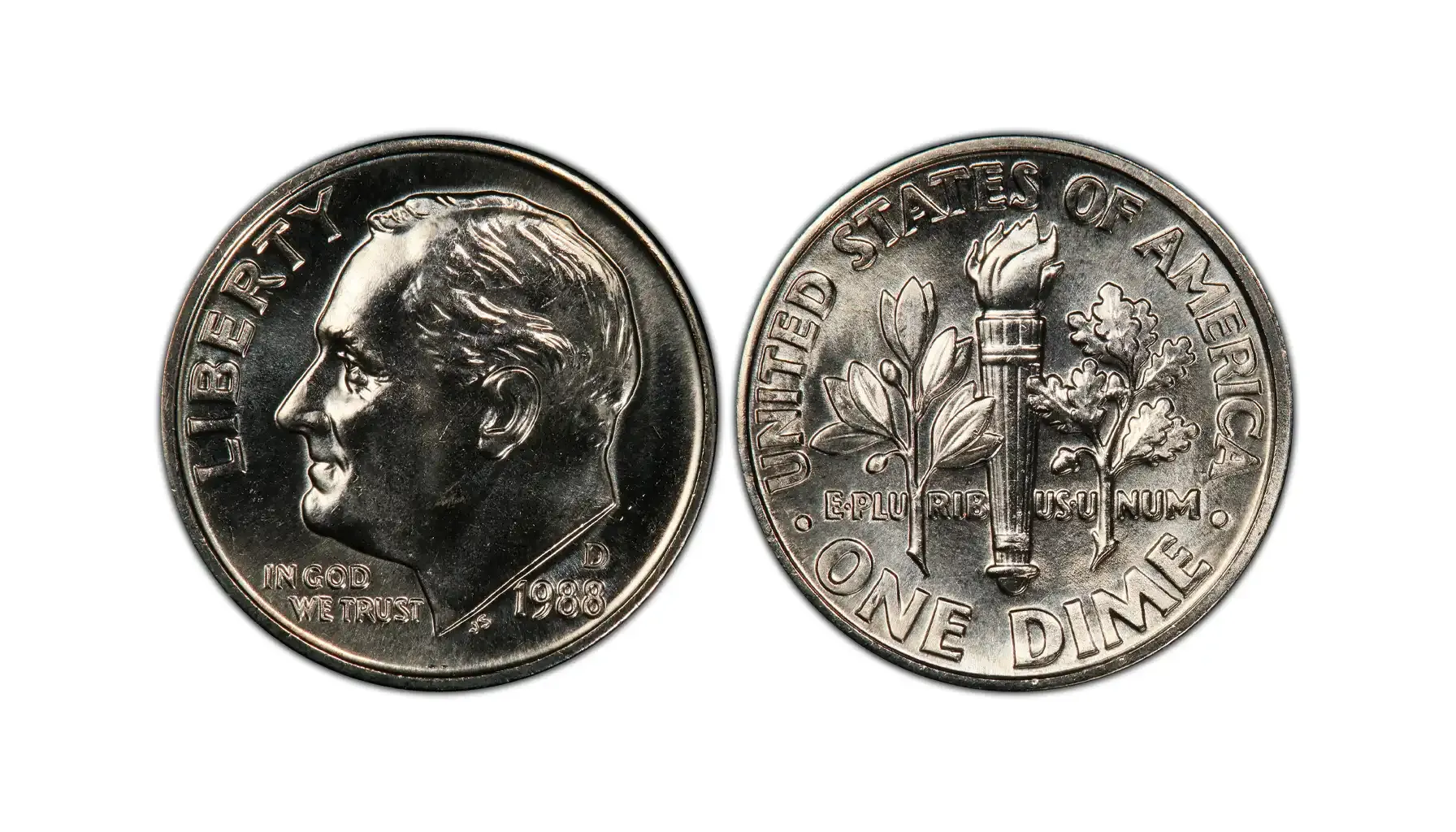
Denver-made pieces had a slightly smaller mintage of 962,385,489. Still gigantic compared to the coins of the past, though.
1988 Dime D mint mark is on the observe, in the area under Roosevelt’s neck.
1988 Dime D has a similar value of 10¢.
1988 S Dime Value
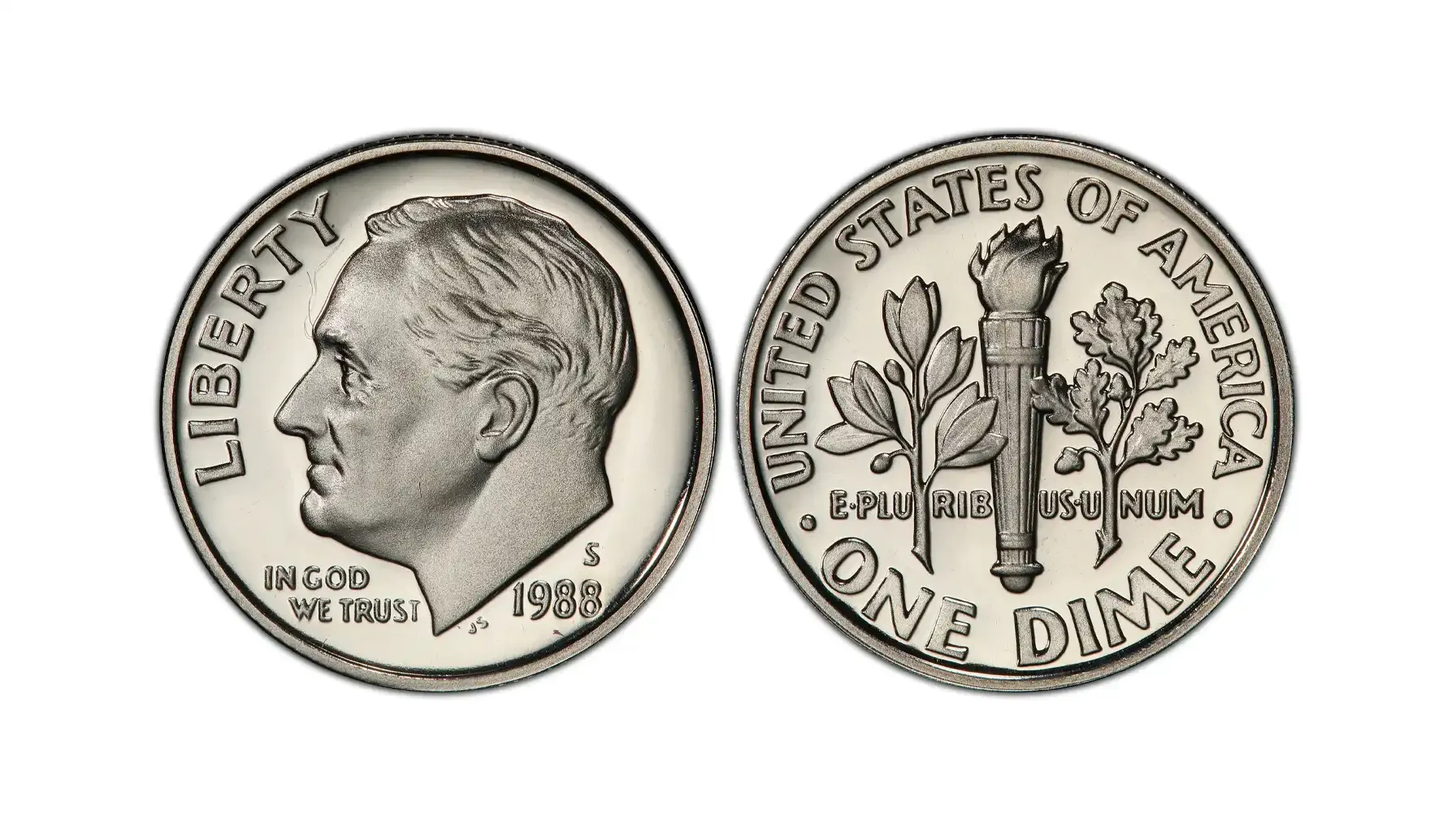
San Francisco made only a few S-dimes. The mintage was 3,262,948 pieces.
It happened not because the Mint was lazy or bad. On the contrary. The San Francisco Mint specifically made “Proof pieces”, coins not for circulation, but for collection.
Because all pieces are high quality, an S-dime can get you $1 or more, depending on grading.
Dime Grading
We’ve just found out that certain pieces, like “Proof pieces”, are high-quality and worth more money.
Grading helps to determine a coin’s quality. Pennies, dimes, and dollars have different gradings.
Grade | Description | Type |
G–4 (Good) | Heavily worn; major details are visible, but flat in areas. | Circulation (P, D) |
VG–8 (Very Good) | Moderate wear; rims are visible, yet some details are blending. | Circulation (P, D) |
F–12 (Fine) | Moderate wear, all major features are defined. | Circulation (P, D) |
VF–20 (Very Fine) | Light wear, more design details are visible. | Circulation (P, D) |
EF–40 (Ext. Fine) | Light wear on high points, nearly full details are preserved. | Circulation (P, D) |
AU–50 (About Unc.) | Slight traces of wear; mint luster is visible. | Circulation (P, D) |
MS–60 (Mint State) | Uncirculated; contact marks, has dull luster. | Circulation (P, D) |
MS–65 (Gem Unc.) | Strong strike, minimal marks, has good luster. | Circulation (P, D) |
MS–67/68+ | Superb strike, is nearly flawless. | Circulation (P, D) |
PR–60 to PR–64 | Average proof with minor hairlines. | Proof (1988-S) |
PR–65 to PR–67 | Nice cameo contrast, has clean fields. | Proof (1988-S) |
PR–68 to PR–69 DCAM | Deep Cameo, sharp contrast, nearly flawless. | Proof (1988-S) |
PR–70 DCAM | Perfect coin; flawless under magnification. | Proof (1988-S) |
1988 Dime Error List
Error coins don't fit into the grading table. They deserve their entry.
Is a 1988 dime worth anything? A flawed coin could give you from a few dozen to a few hundred dollars.
1988 P Dime Error List With Pictures
As this type has the biggest mintage, it also has the biggest error variety. Including:
Off-Center Strike
Clipped Planchet
Broadstrike (No Rim)
Filled Die
Die Clash
Certain error types and their severity influence the 1988 P Dime error value. Here are the examples of these errors with images.
Off-center strike
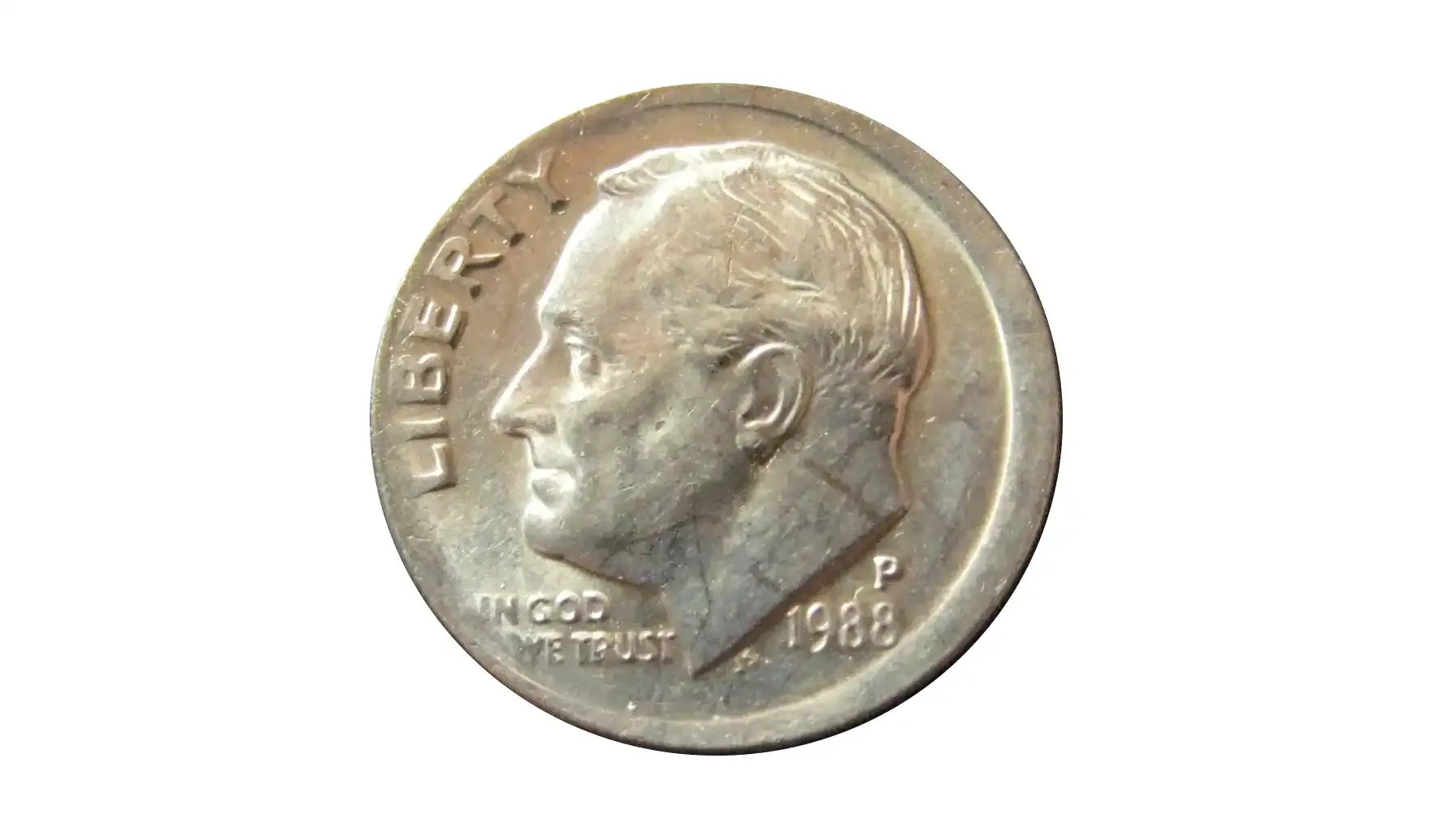
Look for: Uneven borders, a portion (5% to 90%) of the design missing. The piece may appear slightly oval or "crescent cut".
Error cause: The blank was misfed into the striking chamber. Probably too far to the left, right, top, or bottom. The dies struck it only partially.
Estimated price: $5 – $30, maybe more in severe cases.
Clipped Planchet
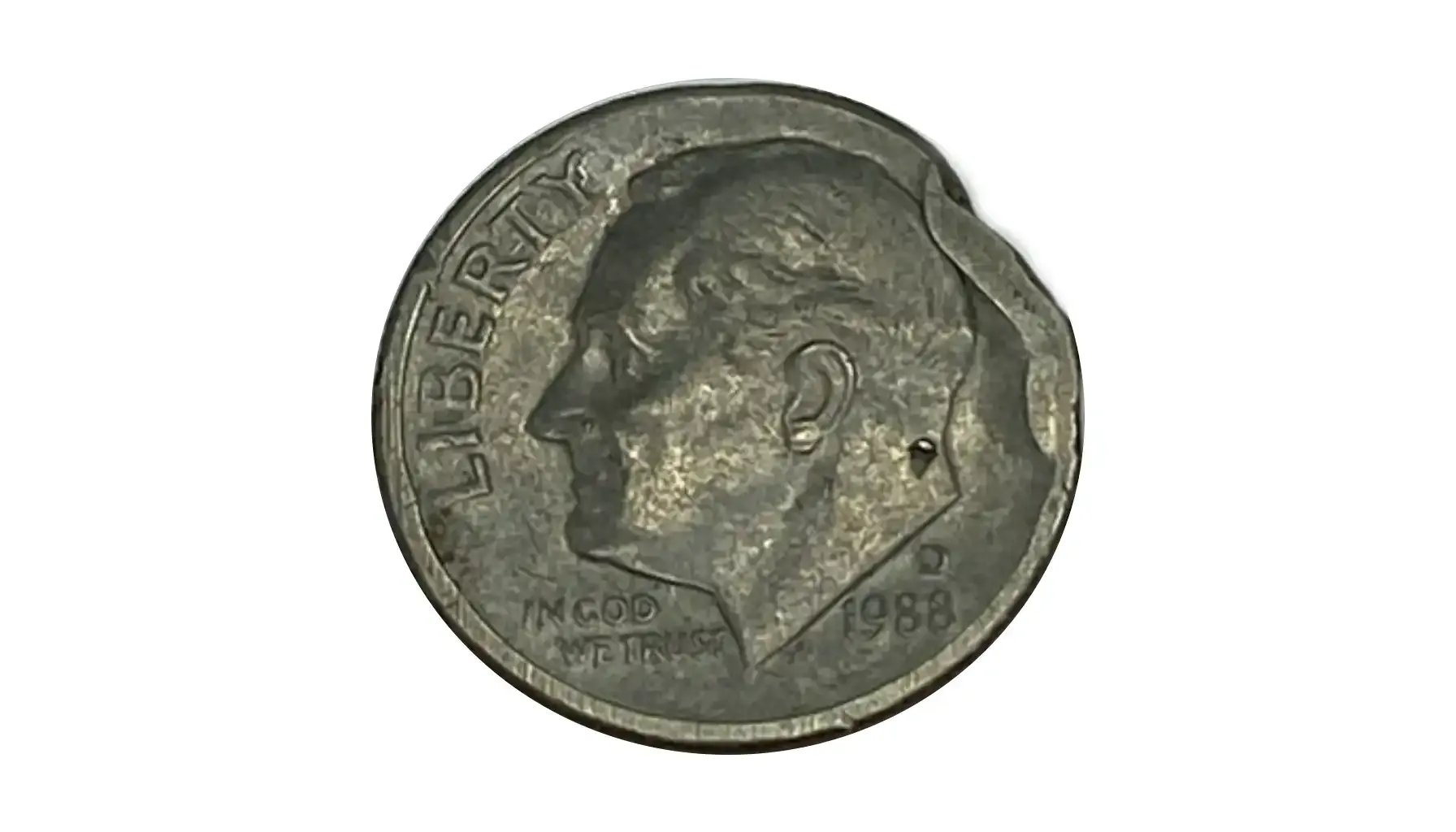
Look for: A clean, curved, or straight portion is missing from the edge. Design elements near the clip may look distorted or weakly struck.
Error cause: A new blank is punched too close to the edge of the strip. Thus, one piece is left missing.
Estimated price: $5 – $75, depending on the size of the missing clip.
Broadstrike Error
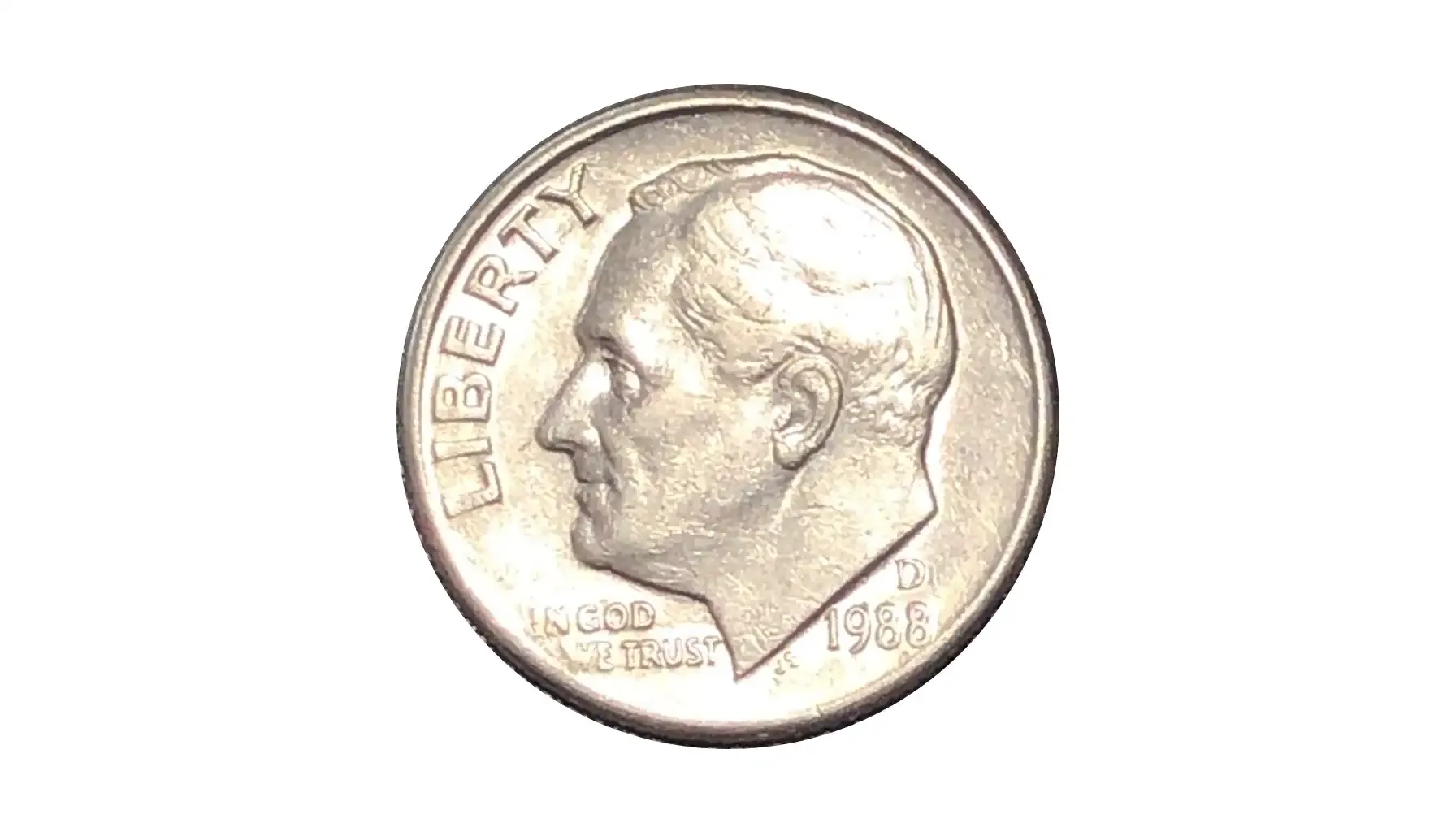
Look for: A smooth edge instead of the normal reeded edge. The coin is visibly larger than normal, as if stretched. Also applies to the 1988 P Dime rim error.
Error cause: the machine strikes a coin outside the retaining collar that normally shapes it. As a result, the coin spreads out wider than usual and appears flattened, often without a full rim.
Estimated price: $5 – $100, depending on the severity of broadening.
Filled Die

Look for: Weak design elements, blurriness.
Error cause: Filled Die Error (also called a Grease-Filled Die Error) happens when foreign material, usually grease or dirt, clogs a die during the minting process. When the die strikes, the clogged area fails to leave an impression.
Estimated price: $5 – $75, depending on the severity of broadening.
Die Clash
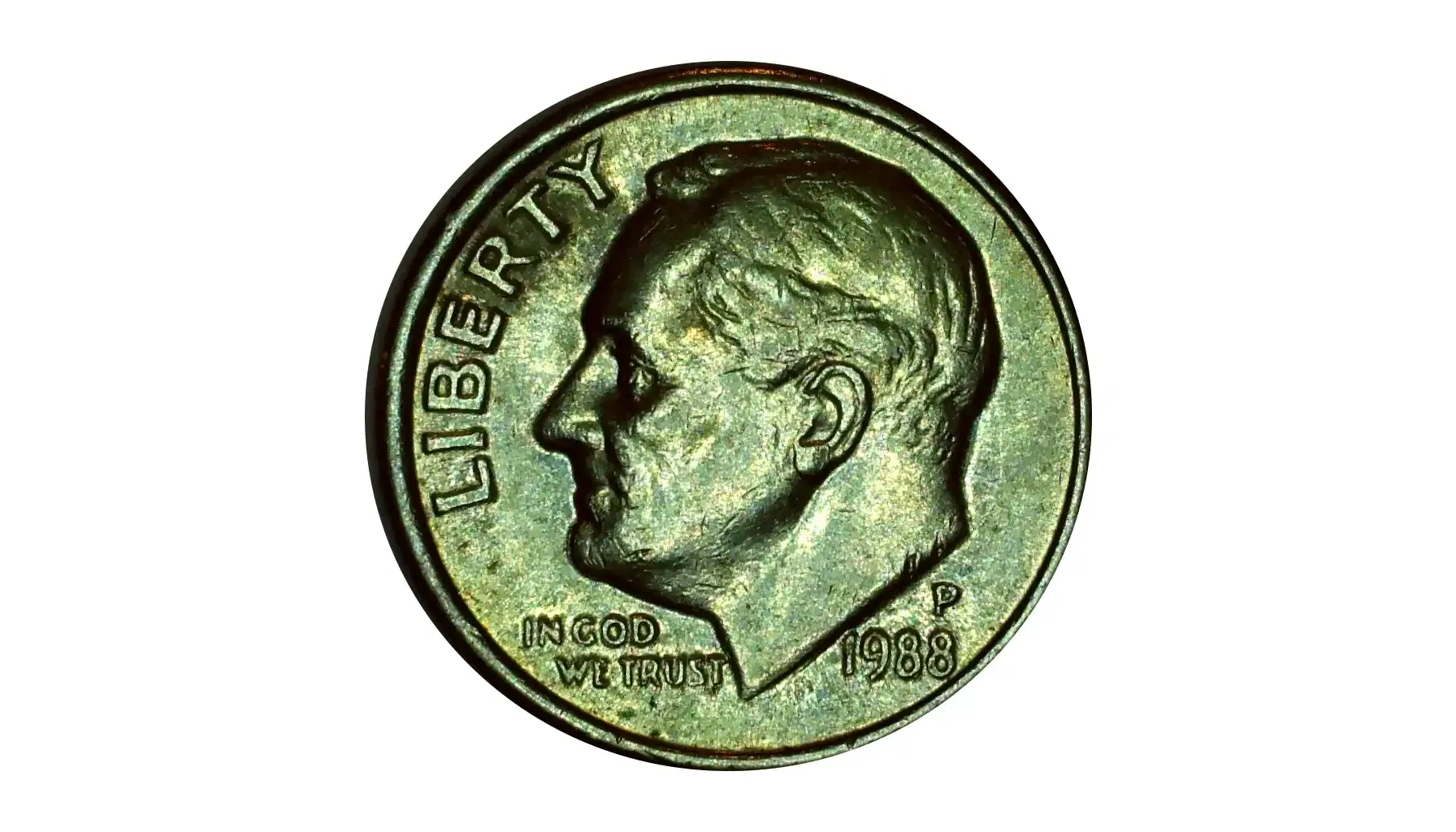
Look for: Parts of the opposite side’s design faintly visible where they don’t belong. You can call them “Ghost images”.
Error cause: The obverse and reverse dies strike each other without a planchet between them. This leaves parts of the design from one die impressed onto the other. The design then transfers to subsequent coins.
Estimated price: $5 – $100, depending on the severity of broadening.
1988 D Dime Error List
D-type has similar errors to the 1988 Dime P mint mark ones. Including:
Clipped Planchet
Off-Center Strike
Die Clash
Broadstrike (No Rim)
1988 D Dime error value is similar to the P-variants. It all depends on how big the flaw is.
1988 Dime Value
Let’s answer the big question. How much is a 1988 P dime worth?
Mint Mark | Location | Grade: Circulated (G–XF) | Uncirculated (MS60–MS65) | Proof (PR65 or better) |
1988-P | Philadelphia | 10¢ | $0.50 – $2 | N/A |
1988-D | Denver | 10¢ | $0.50 – $2 | N/A |
1988-S | San Francisco | N/A | N/A | $1 – $5 |
1988 P Roosevelt Dime and D-Dime both go for their low face value. S-coins come only in proof condition and are worth a bit more.
It seems that 1988 dimes worth money should have an error. And a big one, preferably.
How to Spot Errors
Here’s a little guide for you. If you know your collectible has an error, you can sell it for more:
Use a 10x loupe or microscope to examine lettering, date, mint mark, and edge. Be careful when examining your collectible. Wear gloves to protect fragile prints.
Look for doubling, alignment issues, or unusual surface textures.
Compare with a known standard 1988 Dime to notice anomalies.
Remember, if the process seems hard to you, you’re not alone. AI-coin identifiers already exist. Let us introduce one of the best of them to you.
Coin ID Scanner
Coin ID Scanner is a free app that can scan coins and find out their numismatic descriptions instantly.
Take a clear picture of your coin.
The App scans it, using image recognition technology.
The Coin ID Scanner will identify the coin's country, denomination, and other key details.
You can then store this piece in an online collection and compare it with other pieces.
Coin ID Scanner also provides:
An AI-assistant for numismatic questions.
A big database with over 150.000 entries.
Lists and guides to coinage gradings.
Blogs with coin overviews, numismatic news, and much more.


